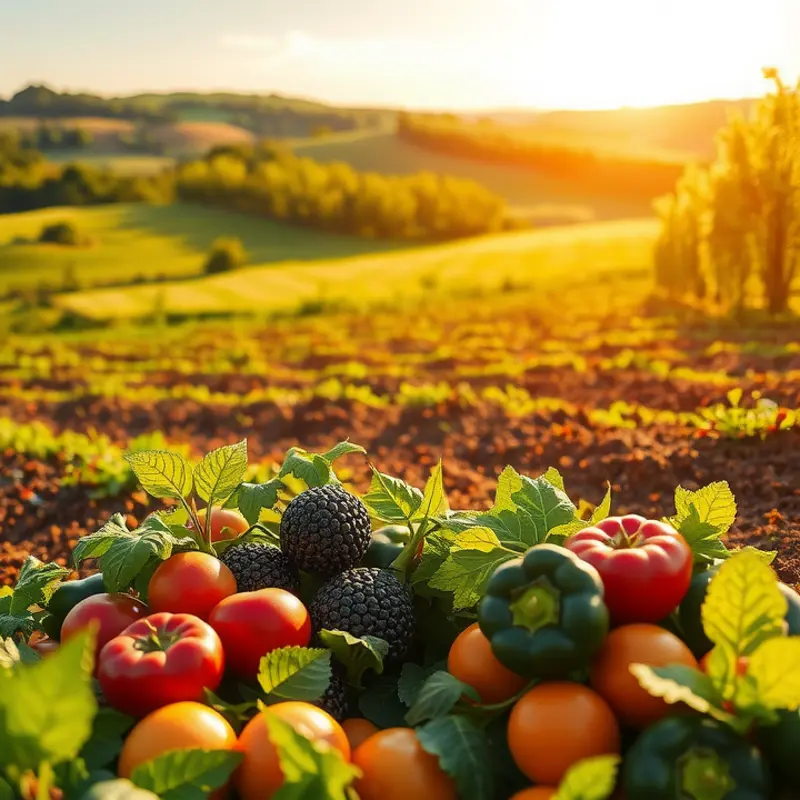Food waste is a significant concern in households across the globe. Learning how to efficiently store food, manage inventory, and utilize leftovers can drastically reduce waste. With practical strategies and simple changes, everyone can foster a more sustainable lifestyle, ensuring ingredients maintain their freshness while promoting economic savings.
Safe Storage Solutions: Keep Food Fresh

Proper storage techniques can extend the lifespan of your groceries and maintain their quality, ensuring you savor their flavors longer while minimizing waste. One of the most effective strategies involves understanding how different foods interact with their environments.
Start with the basics. A well-organized refrigerator is key to maximizing the freshness of perishable items. Most fruits and vegetables thrive in the crisper drawer, which maintains optimal humidity levels. Keep fruits like apples and pears separate from leafy greens, as the ethylene gas they emit can speed up spoilage of sensitive produce. Consider investing in ethylene-absorbing sachets for added protection.
Meats and dairy products require consistent cold temperatures. Store them in the coldest part of the refrigerator, usually the back of the bottom shelf. To prevent cross-contamination, wrap raw meats securely or place them in dedicated containers. For dairy, ensure containers are airtight to preserve flavor and texture.
Freezing is another excellent method for prolonging food life. However, correct packaging can make all the difference. Use freezer bags or airtight containers to prevent freezer burn. Always label items with the date they were frozen, and try to use them within six months for best quality. Remember, not all foods freeze well; dairy products like yogurt and some soft cheeses may lose texture when frozen.
Pantry staples such as grains and cereals benefit from cool, dry storage. Use airtight containers to keep moisture and pests out. Label jars and containers with expiration dates to easily manage your stock. Items like oils and nuts have a higher fat content and are more susceptible to turning rancid, so store them away from heat and light.
Packaging does more than just keep food contained; it plays a critical role in freshness. Understanding how to repackage bulk items or use vacuum sealing can significantly reduce spoilage. This approach is especially beneficial for those buying in bulk or meal prepping. When repackaging, aim to eliminate as much air as possible to prevent oxidation, which can deteriorate food quality.
A smart storage system tailored to your specific habits and family size can dramatically reduce food waste. Label shelves to designate sections for produce, leftovers, and ready-to-cook ingredients. This simple step can help track what needs to be consumed first, preventing forgotten foods from ending up in the bin.
To enhance your storage strategy, explore eco-smart kitchen storage solutions to not only keep food fresh but also lower your carbon footprint: Eco-smart kitchen storage.
Optimizing your storage practices can effectively bridge the gap between food purchases and meal preparations, ensuring you make the most of every grocery item. Adopting these strategies will contribute to a more efficient, less wasteful kitchen, benefiting both your wallet and the environment.
Inventory Management: Plan & Use Effectively

Adopting a strategic approach to meal planning begins with mastering kitchen organization. One essential technique is the FIFO method—First In, First Out. By placing newer grocery items behind older ones, you ensure the oldest foods are used first, minimizing spoilage. This simple yet effective method can transform how you manage perishables and pantry staples, effectively reducing waste.
Tracking expiration dates is equally critical. Maintaining a list of items nearing expiration helps in planning meals that utilize them first. Whether it’s sticky notes on jars or a digital spreadsheet, consistency is key to successfully managing these dates. Regular updates and checks can prevent accidentally keeping food past its prime.
Leftovers deserve a special mention. With a touch of creativity, yesterday’s dinner can become tomorrow’s lunch. Transform roasted vegetables into a savory soup, or combine leftover rice with fresh ingredients for a vibrant stir-fry. Experimentation not only keeps meals exciting but also curbs food waste significantly. You can explore some minimal-prep dinner ideas here that can inspire new ways to use leftovers.
Embracing technology can further enhance your inventory management. Several apps are designed to track kitchen stock and suggest recipes based on available ingredients. These tools simplify meal planning by cataloging what you have and reminding you what’s expiring soon. Although not mentioning specific apps, many free and paid versions exist, offering various functionalities tailored to your preferences.
Creating a designated space for specific food categories fosters better organization. Group similar items together—baking ingredients in one cabinet, snacks in another. This compartmentalized approach reduces redundant purchases, helping you identify what’s truly needed on grocery runs.
Another tip is to practice mindful replenishment; purchase only what you know you’ll use. Impulse buys often lead to forgotten items languishing at the back of the cupboard. By planning meals in advance and sticking to a shopping list, you can make intentional purchases aligned with your family’s consumption patterns.
An eco-smart kitchen also emphasizes storing foods properly. From precise temperature settings in your fridge to using airtight containers for dry goods, correct storage methods can extend the life of your groceries. Understanding the unique needs of different foods allows for smarter storage decisions.
Proactive measures like these lay the groundwork for a more sustainable kitchen. By incorporating efficient inventory management habits, you not only diminish waste but also enjoy fresher meals, saving both money and the environment.
Final words
Preventing food waste is a collective responsibility that benefits both our wallets and the environment. By implementing effective storage solutions and strategic inventory management practices, anyone can enjoy fresher food while significantly reducing their waste. Analyze current habits, adapt to better practices, and be intentional about consumption. Each small step contributes to a greater impact, forging a sustainable pathway forward for all.







